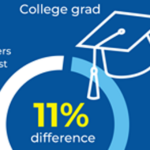Teachers everywhere are struggling to support students affected by the opioid epidemic.
As the opioid crisis continues to expand, affecting more and more schools across the United States, educators everywhere are struggling to cope. As I found in my own recent research — a case study of schools located in Massachusetts, New Hampshire, and Maine — the impact has been nothing short of devastating for teachers and school staff. Educators are desperately in need of resources, leadership, and guidance on how best to support students while, at the same time, attending to their own needs as they confront the immense suffering that opioids have wrought.
My study focused on 76 kindergarten through 2nd-grade educators — including teachers, counselors, and administrators — from three schools in three states. All are located in cities or towns in the northeastern U.S. that have at least three times the national average of opioid overdoses, according to community databases and data available through the Centers for Disease Control and Prevention (2017). I spent several months in and around the schools, collecting information through interviews, surveys, and reviews of professional development plans, schoolwide special education trends, and improvement plans. The results (Welby, 2019) indicate that the nation’s educators urgently require substantial levels of support to help them face the implications of this epidemic.
Children of the opioid epidemic
The impact of the opioid epidemic is significant and far-reaching. According to the Centers for Disease Control and Prevention (CDC, 2017, 2019), drug overdose deaths in the United States rose from 16,849 in 1999 to 70,237 in 2017, with more than 45,000 of those deaths in 2017 involving opioids. Knowledge of the effect the epidemic has on schools is critical because, unfortunately, the number of children impacted by the opioid epidemic continues to climb across the country.
As this trend continues, more and more children affected by the opioid epidemic, whether born addicted to opioids or living in a household battling addiction, will attend schools across the county. The frequency of Neonatal Abstinence Syndrome (NAS) — symptoms of prenatal opioid exposure while in utero — nearly doubled from 2009 to 2012 and has grown fivefold since 2000 (CDC, 2013). Children prenatally exposed to opioids show lower academic performance than infants not exposed to opioids. Specifically, those with NAS can be afflicted with weaknesses in language and deficiencies in cognition (Beckwith & Burke, 2015) and educational disabilities once in school (Fill et al., 2018). Research also indicates that NAS contributes to neurodevelopmental, cognitive, and behavioral problems (Beckwith & Burke, 2015; McGlone & Mactier, 2015; Ornoy et al., 2010).
Children in families fighting opioid addiction may experience trauma, neglect, abuse, or abandonment, all of which increase their chances of having emotional, behavioral, and cognitive disabilities (Herranz et al., 2014). The educators in this study report that many children in their communities — even very young children — are regularly exposed to drugs and crime and are victims of neglect, abuse, homelessness, transiency, food insecurity, and parental unreliability and abandonment. The stress and trauma of living in such an environment may prevent a child from learning, having appropriate social interactions with other children, and maintaining good health over the long term (Franke, 2014). Further, research reveals that three or more adverse childhood experiences before the age of five is associated with a possible sevenfold increase of having a developmental disability, physical disability, or mental disability (Bright & Thompson, 2018). Addiction can lead to other adverse experiences, both for the person with the addiction and their family members; these experiences, in turn, affect children’s brain development, cognition, and social growth, making it difficult for them to perform well in school.
Educator trauma and stress
Of the educators I interviewed, 79% said that their students’ exposure to opioid addiction added to their own stress and trauma. A Massachusetts 1st-grade teacher explained how seeing her students’ pain was wearing her down:
It’s exhausting. It is absolutely and completely exhausting. I mean, I’m young. I’m only 26, and I come home from work just exhausted. I go to bed at 8:00 because I just feel so fried from trying to understand what my kids are going through, how to figure out how to help them. (Massachusetts P6, personal communication, January 15, 2019)
Teachers expressed feeling helpless about the impact the epidemic is having on their students, but they said their empathy drives them to continue hoping for ways to save them. This has led some teachers to focus less on academic achievement and more on ensuring students’ basic needs are met. Teachers, like this K-2 special educator in New Hampshire, described purchasing clothing, crocheting hats, and giving up their lunches for students:
I’ve brought in clothes, I’ve brought in food, I’ve had my kids go through their toys. I fed one girl for four months at lunch last year, given my own lunch to kids, just to have them make it through the day and feel something. It’s wearing. I think the trauma that . . . the teachers and administrators feel is like nothing that I’ve ever seen before and you know it’s because of this horrible epidemic. (New Hampshire P6, personal communication, January 23, 2019)
The stress is taking a toll on staff, as a Maine principal explained:
The piece that probably impacts us the most about the epidemic is the impact on staff. The staff is really struggling with holding all this together. When you have that many kids in need, how do you take it in as an adult? It’s hard. (Maine P1, personal communication, December 7, 2018)
In search of help, teachers often report issues to the Department of Youth Services (DYS), but this only increases their frustrations when nothing happens. Notably, 79% of the educators who participated in this study have been in contact with DYS as a result of the opioid epidemic, but their students continue to go home to horrible situations. One New Hampshire teacher called DYS 11 times on one family from September to December 2018, with no intervention until the 11th report, when the children were removed. A Maine participant said that when she calls DYS they tell her they are too overloaded to even think about her concerns. And a Massachusetts teacher explained that she became so frustrated when she called DYS with no result that she stood in front of a bus at the end of the day to stop it from taking her student home.
Educators feel a sense of responsibility when their students are going home to a horrible situation, and their inability to help leads to feelings of guilt and hopelessness, feelings that are compounded when there’s no internal support for them or their students. A Massachusetts 1st-grade teacher said she sought support from the central office as she helped a student who had witnessed her mother’s murder, but all she got was a pamphlet to read. Unable to cope herself, she eventually reached out to a medical doctor.
The situation is so serious that multiple teachers have had to take medical leave for post-traumatic stress disorder (PTSD) and panic attacks. A New Hampshire administrator described two young teachers who were hospitalized after having panic attacks for the first time, and a Massachusetts teacher said that three of her colleagues had to take medical leave for PTSD. There are no easy answers for these educators, but preparing and educating these professionals may relieve some of their day-to-day trauma.
Educators feel a sense of responsibility when their students are going home to a horrible situation, and their inability to help leads to feelings of guilt and hopelessness, feelings that are compounded when there’s no internal support for them or their students.
School preparedness
All the educators agreed that their schools are not proactively preparing for the influx of students affected by the opioid epidemic. Only 8% of the teachers said they have received training or professional development that focused on the opioid epidemic, and only 21% feel prepared to teach a student who has been exposed to it. Teachers said that their leaders seemed aware of the problem, but,
as far as they knew, their districts weren’t doing much about it.
A Maine administrator went even further, saying that the school district had yet to even acknowledge that there is an opioid abuse issue within the community. Similarly, a principal from New Hampshire bemoaned her district’s slow response:
We are woefully unprepared. When I supervised Child Find, before I was the principal here . . . three years ago, we brought in more than 400 preschoolers for evaluation. Most of those young children were evaluated because there was a substance abuse issue when mom was pregnant. We knew that three years ago. Three years ago! We have not prepared for those children in our district. We knew, but we are not addressing the needs of those children in our schools and we are still not preparing for them. (New Hampshire P1, personal communication, January 11, 2019)
Document analysis confirmed that none of the three schools studied had scheduled any professional development to address the opioid epidemic within the previous or upcoming year.
What to do?
The opioid epidemic and its consequences present a serious challenge to schools, and it’s not clear how schools can best address the problem. However, whatever the ultimate solution may be, an acknowledgment of the problem and its effects is the first step in the intervention process. To pretend it is not a problem is doing injustice to the educators and children affected by this societal emergency.
The majority of educators in my study reported the need for additional resources. Based on my in-depth conversations with administrators, teachers, and counselors in conjunction with reviews of curriculum and professional development plans, I believe the following resources would be beneficial for addressing the needs of the students and educators affected by the opioid crisis:
- Additional special educators, intervention specialists, support staff, and instructional assistants.
- Full-time mental health providers in the schools available all day for student support, as well as clinical intervention teams of mental health providers, nurses, and social workers to support students and families.
- Social workers who specialize in homeless populations and more truancy officers to keep track of students’ whereabouts and no shows.
- A districtwide resilience and social-emotional curriculum. Pick one program and implement in all the schools to keep language, strategies, and expectations consistent as students move between schools within the district.
- Professional development on the opioid crisis, particularly NAS and disabilities associated with opioid exposure, as well as accommodations students may need in class as a result of the crisis.
- Professional development on adverse childhood experiences, trauma-informed teaching, and supporting the needs of students with mental illness.
- Greater support for teachers and school staff themselves, including resilience training, professionally guided group therapy, and wellness trainers for educators.
The youngest and often overlooked victims of the opioid epidemic are the children. And because of the children’s suffering, adults in schools take on the responsibility of trying to minimize the suffering, neglect, and anguish that they feel. Their failed attempts to save students lead to feelings of hopelessness. Currently, there are minimal supports available to alleviate the hopelessness students and school staff experience when dealing with the ramifications of the opioid epidemic. Without proper supports, plans, and preparation, this problem will continue to plague schools and disrupt the lives of a generation of children.
My in-depth investigation into schools located in areas of crisis and witnessing such devastation and anguish show that schools, administrators, teachers, staff, and students are experiencing emergency circumstances and need crucial help. The burden of trauma students are experiencing should not rest solely on the educators. School districts need to invest immediately in the mental health and well-being of educators because they are struggling and need support, right now. This is a societal emergency, and policy makers and leaders in education, medicine, government, and other relevant fields need to take a collaborative approach in searching for a resolution.
Educator voices
My students could not tell you what an aquarium is but can explain the process to boot up heroin.
— New Hampshire 2nd-grade teacher (2019)
Our kids know way too much. They know what different substances look like, they know street names, they have been held by gunpoint over a drug deal gone wrong, they have watched their parents and guardians inject heroin. They are taken out of their homes because of this epidemic. I would say that every single child in our school has experienced some type of trauma.
— New Hampshire K-2 special education teacher (2019)
It is so hard. I think of my babies all the time. I do not know what they are going home to after school. Are they going on to a home with a parent that overdosed that day? Will they see that? Will they be the one to find them? Are they going home to starve and realize their parents would rather purchase drugs than feed them dinner?
— New Hampshire kindergarten teacher (2019)
I worry about my students over the weekend. Holidays, I worry about them. This is tough. This role is tough. I am always worrying about them. I need to take care of myself and sometimes I can, but most of the time it bothers me so much that I cannot stop the worrying. In my mind it is always them, them, them. These kids have nothing. Nothing. — New Hampshire K-2 social emotional specialist (2019)
References
Beckwith, A.M. & Burke, S.A. (2015). Identification of early developmental deficits in infants with prenatal heroin, methadone, and other opioid exposure. Clinical Pediatrics, 54 (4), 328.
Bright, M.A. & Thompson, L. (2018). Association of adverse childhood experiences with co-occurring health conditions in early childhood. Journal of Developmental and Behavioral Pediatrics, 39 (1), 37-45.
Center for Disease Control and Prevention. (2013). Prescription painkiller overdoses: A growing epidemic, especially among women. Atlanta, GA: Author.
Centers for Disease Control and Prevention. (2017). 2017 drug overdose deaths. Atlanta, GA: Author.
Centers for Disease Control and Prevention. (2019). Drug and opioid-involved deaths — United States, 2013-2017. Atlanta, GA: Author.
Fill, M., Miller, A., Wilkinson, R., Warren, M., Patrick, S., Dunn, J., Schaffner, W., & Jones, T. (2018). Educational disabilities among children born with Neonatal Abstinence Syndrome. Pediatrics, 152 (3), 1-8.
Franke H.A. (2014). Toxic stress: Effects, prevention and treatment. Children (Basel, Switzerland), 1 (3), 390–402.
Herranz, G.S., Vílchez, M.A.L., Ledo, J.D., & Sierra A.M. (2014). Children born to heroin addicted mothers: What’s the outcome 25 years later? Journal of Addiction Research and Therapy, 5(180).
McGlone, L. & Mactier, H. (2015). Infants of opioid-dependent mothers: Neurodevelopment at six months. Early Human Development, 91 (1), 19-21.
Ornoy, A., Daka, L., Goldzweig, G., Gil, Y., Mjen, L., Levit, S., Shufman, E., . . . Greenbaum, C. (2010). Neurodevelopmental and psychological assessment of adolescents born to drug-addicted parents: Effects of SES and adoption. Child Abuse and Neglect, 34 (5), 354-368.
Welby, K. (2019). The implications of the opioid epidemic on select elementary schools in crisis regions of the Northeast: A multiple case study investigation (doctoral dissertation). Manchester, NH: Southern New Hampshire University.
Citation: Welby, K.A. (2019). Coping with the opioid crisis: Teachers need support, right now. Phi Delta Kappan, 101 (3), 53-56.
ABOUT THE AUTHOR

Kathryn A. Welby
KATHRYN A. WELBY is director of K-12 teacher preparation programs and assistant professor of practice at Merrimack College, North Andover, MA.










